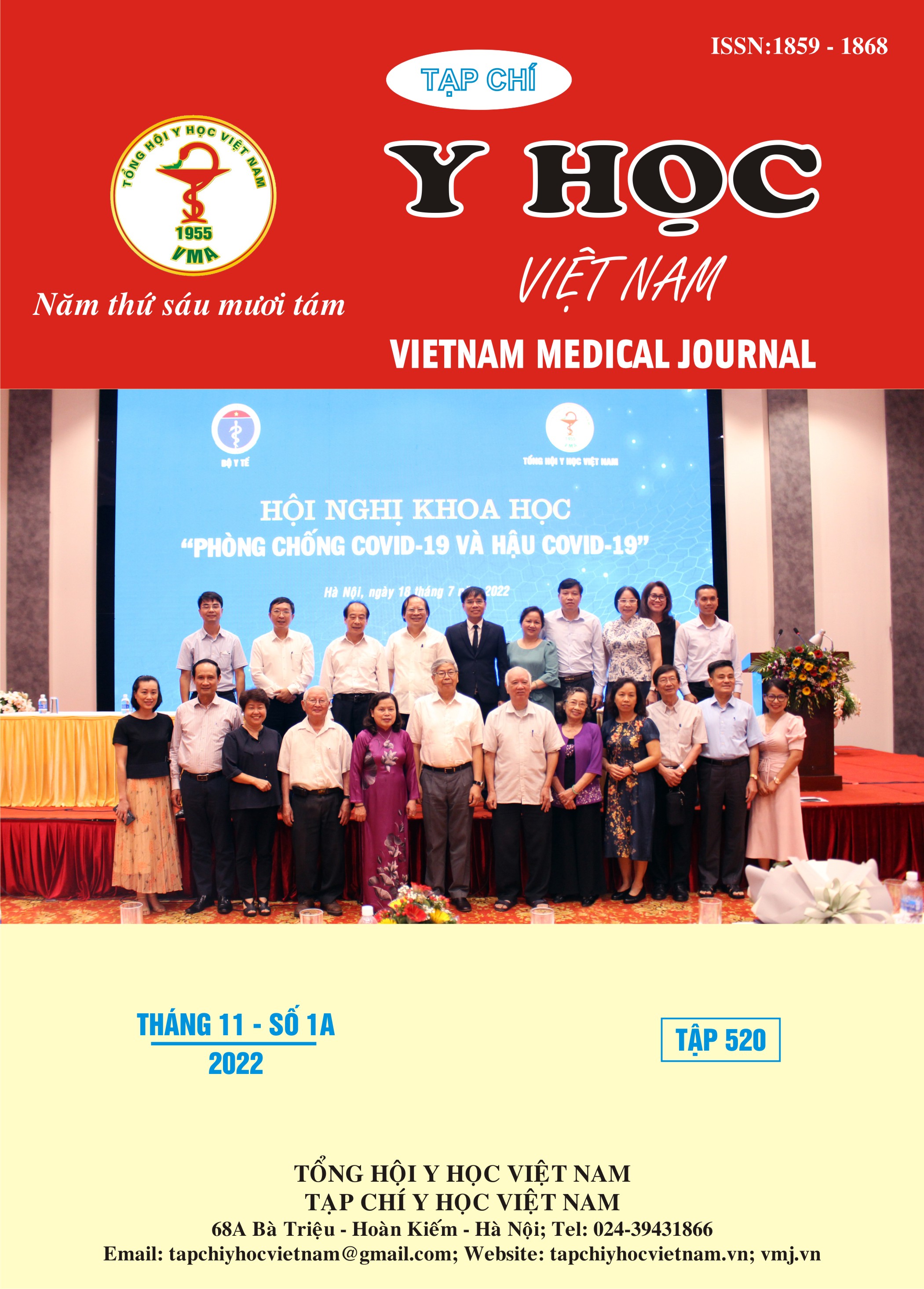HIGH TIBIA OSTEOTOMY FOR VARUS OSTEOARTHRITIS KNEE
Main Article Content
Abstract
Introduction: Osteoarthritis knee is often occured in medial compartment means erotion of cartilage in medial femoral condyle and tibia plateau. Total knee replacement still has many disadvantages and sacrificing of lateral femoral condyle is not necessary. High tibia osteotomy is a surgical technique that preserves of real knee joint, as a result it’s better for young patients who have osteoarthritis in medial compartment knee. Methods: from 01/2006 to 01/2016, in SAI GON – ITO Hospital, we performed total 45 cases of varus osteoarthritis knee with high tibia osteotomy technique. Mean follow up 7 years (from 6 months to 10 years). Assessment on clinical and Xray features. Result: 38 cases are still good in clinical result, no pain – walking. 7 cases feel anterior pain. No case has a subsequent arthroplasty. 100 % union, full range of motion. No complication such as infection, stiffness knee. Conclusion: high tibia osteotomy has a low rate of complication, good union. Improves good knee function, good range motion. We highly recommend this procedure, especially for patients in whom a total knee arthroplasty is not desirable because of their young age or their high activity level.
Article Details
Keywords
High Tibia Osteotomy (HTO), varus osteoarthritis
References
2. Insall, J. N.; Joseph, D. M.; and Msika, C.: High tibial osteotomy for varus gonarthrosis. A long-term follow-up study. J. Bone and Joint Surg., 66-A: 1040-1048, Sept. 1984.
3. Jakob, R. P., and Murphy, S. B.: Tibial osteotomy for varus gonarthrosis: indications, planning, and operative technique. In Instructional Course Lectures, American Academy of Orthopaedic Surgeons. Vol. 41, pp. 87-93. Park Ridge, Illinois, American Academy of Orthopaedic Surgeons, 1992.
4. Kirgis, A., and Albrecht, S.: Palsy of the deep peroneal nerve after proximal tibial osteotomy. An anatomical study. J. Bone and Joint Surg., 74-A: 1180-1185, Sept. 1992.
5. Krackow, K. A., and Lennox, D. W.: High tibial osteotomy: techniques for accurate angular correction and new techniques of internal fixation for early range of motion. Orthop. Trans., 7: 503, 1983.
6. Maquet, P.: The biomechanics of the knee and surgical possibilities of healing osteoarthritic knee joints. Clin. Orthop., 146: 102-110, 1980.
7. Matthews, L. S.; Goldstein, S. A.; Malvitz, T. A.; Katz, B. P.; and Kaufer, H.: Proximal tibial osteotomy. Factors that influence the duration of satisfactory function. Clin. Orthop., 229: 193-200, 1988.
8. Ogata, K.; Yoshii, I.; Kawamura, H.; Miura, H.; Arizono, T.; and Sugioka, Y.: Standing radiographs cannot determine the correction in high tibial osteotomy. J. Bone and Joint Surg., 73-B(6): 927-931, 1991.
9. Paley, D.; Maar, D. C.; and Herzenberg, J. E.: New concepts in high tibial osteotomy for medial compartment osteoarthritis. Orthop. Clin. North America, 25: 483-498, 1994.
10. Waugh, W.: Tibial osteotomy in the management of osteoarthritis of the knee. Clin. Orthop., 210: 55-61, 1986.
11. Yasuda, K.; Majima, T.; Tsuchida, T.; and Kaneda, K.: A ten- to 15-year follow-up observation of high tibial osteotomy in medial compartment osteoarthrosis. Clin. Orthop., 282: 186-195, 1992.


